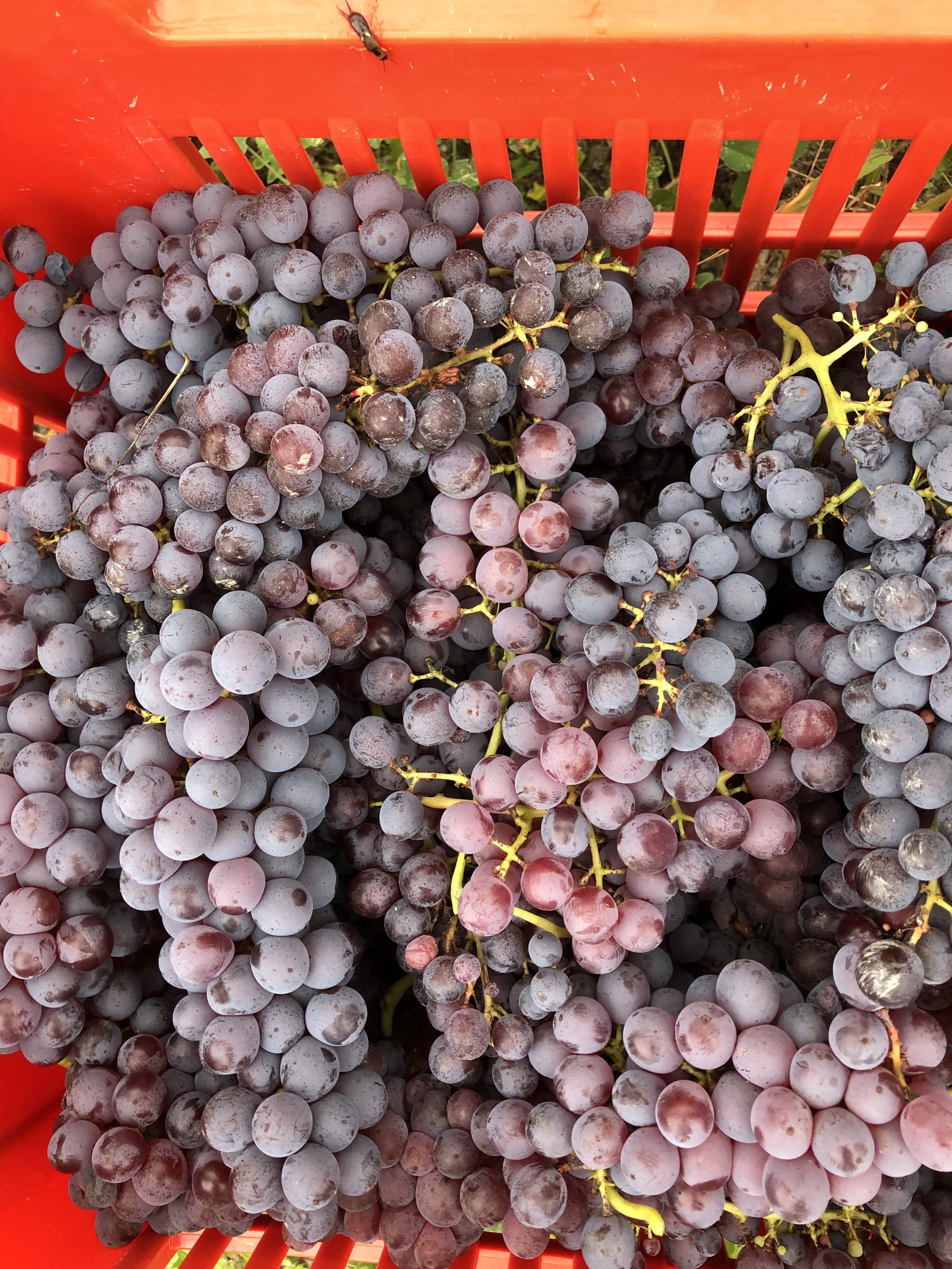Grignolino wine and its noble history
/by: Alexa
Before the arrival of Barolo on the scene, “the wine of the kings” was another one: Grignolino.
Grignolino described as a wine with an anarchic but noble soul, it was one of the favorites of the king of Italy, always on the sumptuous tables of the royal court and the Dukes of Monferrato for their dinners with the biggest personalities of Europe.
Unfortunately, as we know, the trends are always changing, especially inside the spoiled world of nobles of the past. Grignolino started to be abandoned in favor of other wines, such as Barolo.
But let’s proceed in order. It was an expert of wine, Enza Cavallero, who researched the history of Grignolino and wrote about it. She found out that the first written document in which this variety was mentioned was from the XIII century. Then, in the XIV century appeared in the wines inventory of a monastery from Susa as “Grignolerii” wine. However, the very first mention in an ampelographic book was in the XVIII century, in which the writer called it “Nebieul rosè”, probably because it’s a direct descendant of Nebbiolo grape, but it’s lighter in color.
Look at the light color of the grignolino grape
But why isn’t Grignolino as famous as the other wines of the region? The answer is in its more recent history. Between the ‘60 and the ‘70, Monferrato was a big tourist destination of Piedmont. People were especially coming for the restaurants: in 1961 Lidia and Guido Alciati opened, inside a little basement in Costigliole d’Asti village, a luxury restaurant that would become the first two Michelin stars of Piedmont. They were particularly famous for the ravioli del plin in a napkin (by the way, you must try them if you haven’t!). Coming back to the wine, the customers were asking for a bottle of Grignolino thinking that it was a rosè wine. In fact this variety doesn’t give a lot of color to the wine, usually resulting in a very light colored drink that was mistaken for a rosè wine. But Grignolino is the exact opposite, it’s a powerful wine with quite strong tannins that can evolve in time. Usually, the customers left the wine the first time, the second time they asked for something different. Consequently, the restaurants didn’t ask the producer anymore to buy the Grignolino and the production started to be abandoned.
It was only recently that this wine was rediscovered and now has two denominations: Grignolino d’Asti DOC, since 1973 and Grignolino del Monferrato Casalese since 1974.
Still, there aren’t many wineries whose first production is Grignolino, but the potential within this grape varietal has been rediscovered little by little. In 2016 was born the Monferace Association. The 12 founders chose this name because it was the ancient way of calling Monferrato during the era of Aleramico (here to read about Aleramico and the birth of Monferrato). They called Monferace a Grignolino wine that does at least 40 months of aging, of which at least 24 in wood. The idea was to restore the importance of the great Grignolino loved by the nobility of the past. Note that this is a wine that will give its best after some years of resting. The tannins will soften and donate an elegant wine in the nose and mouth.
Talking more technically about Grignolino, the name comes from the fact that the grapes have more seeds, “grignole” in the local dialect, than the other varieties of the area. The great number of seeds makes it difficult to vinify it, because while pressing the grapes, the wine producer has to be really careful not to crush all of the seeds. It could result in a bitter taste of the wine.
Another theory about the name Grignolino suggests that it may come from the local dialect word “grignè” that means laughing. An expression like a smile appears on the face of whoever drinks a glass of Grignolino, because of the strong tannins.
As said before, the color of the wine is very light, this is because of the instability of the grape during the maturation: the single berries in a bunch are not able to achieve the same coloration during this process. Because of this it’s permitted by the disciplinary to add a small percentage of another wine in order to produce Grignolino.
But let’s talk more specifically about the two denominations.
GRIGNOLINO D’ASTI DOC
The area of production includes 35 municipalities under the province of Asti.
The grapes used to make this Grignolino are from 90% to 100% Grignolino and not more than 10% of Freisa, in order to give more color to the final product, but without changing its nature.
The color is light ruby red.
To the nose, it gives delicate fruity notes, especially of red fruits, underbrush and in the end hints of white pepper.
On the palate it feels austere and elegant, but a little astringent because of the tannins. The finish is nicely bitter.
GRIGNOLINO DEL MONFERRATO CASALESE DOC
The area of production includes 29 municipalities around the city of Casale Monferrato, that is one hour west to Turin.
The grapes that can be used by disciplinary are from 100% to 95% of Grignolino and not more than 5% of Freisa and Barbera on their own or blend together.
The color is light ruby red with orange reflexes.
The aromas at the nose are fruit forward, fresh and with a persistent note of dried fruit, especially peanut.
On the palate it’s dry and fresh, with a bitter finish.
It needs to be aged from 1 to 2 years. It’s also possible to produce a riserva that must be aged from 3 to 6 years.




